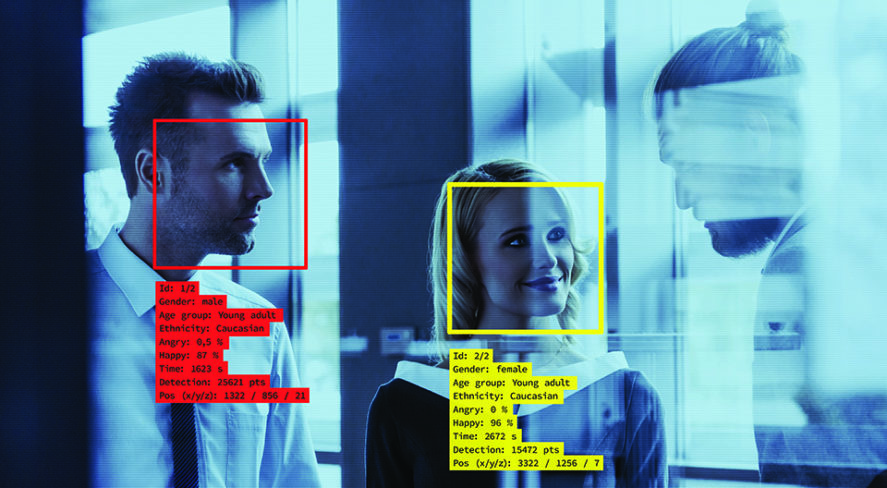Always Watching, Always Learning: How AI-Powered Analytics and Algorithms Make Cameras Smarter


Today’s leading security solutions are carving a new path for the industry. Innovative technology is optimizing the more traditional aspects of security, like video and access control, giving businesses more autonomy when it comes to protecting their assets, property and – most importantly – people.
From robust storage features and centralized offsite management to dynamic video analytics, modern security technologies present a number of opportunities for providers and operators alike. As digital systems outgrow their analog counterparts, security professionals are no longer restricted to onsite touchpoints, manual video reviews and minimal data storage capabilities.
Recently, the Security Industry Association published its annual selection of top megatrends in physical security technology. While cybersecurity again ranked first, artificial intelligence (AI) moved into second place, up from fifth a year earlier. Meanwhile, facial recognition, which had never been on the list before, burst onto the scene in third place. Both of these technologies are optimizing video analytics as a core security function. Match that with the development of centralized, unified systems, and organizations can now rethink their security infrastructure to make it more agile and effective.
Technologies That Are Reshaping Security
Like most other industries, the security space is capitalizing on the opportunities that come with new technologies. In order to remain competitive in a market that is constantly evolving, security providers are investing in several transformative technologies:
- Deep learning AI: The ability to train algorithms to learn and make inferences or associations without human intervention. This is accomplished with convolutional neural networks that build programs that mimic the biology of human brains and their billions of connections between neurons. The advances in AI provide an added layer to video analytics technology, helping systems to not only immediately identify objects moving within a scene, but also characterize when the behavior of an object is anomalous.
- Business intelligence: The ability of computer programs to identify meaningful patterns and insights in large amounts of information. This enables operators to track trends and make informed predictions, such as when spikes in activity or critical events may take place. Outside of security-related use cases, this can inform retail businesses about the success of merchandising or promotional programs.
- Edge analytics: A solution that allows devices to connect to the Internet of Things, this tool is used to examine and refine data as soon as it is collected at the “edge” of the network. That way, only relevant information is sent to the centralized server or data store.
As the security industry responds to these shifts in the digital landscape, it comes as no surprise that there have been breakthroughs in access control software, as well. The most advanced access control solutions on the market can be integrated seamlessly with an organization’s video platforms, alarm panels and wireless locks so that operators can manage multiple security touchpoints with a single browser-based program. In practice, this functionality allows them, for example, to be alerted to monitor the video feed of an entrance when an individual swipes an access card and enters a facility or controlled area.
Video Analytics Are Breaking the Mold
Video analytics are among the most valuable applications of AI in modern security systems. Now there are video management system (VMS) solutions on the market that allow security personnel to monitor feeds on a single, simple interface from any location.
The most advanced VMS solutions include built-in analytics capabilities that leverage deep learning AI, enabling security operators to easily browse through recordings and quickly locate specific individuals and events. Even if the only information a practitioner has when looking for a person of interest is a general physical description, some technologies are so sophisticated that, given a specific time period and simple descriptors such as vehicle type and color, clothing color, gender or age, they are able to find, track and verify the subject in video.
In many cases, video management solutions provide users with complete control over video playback so that security incidents can be followed both retroactively and in real time. Meanwhile, AI can find subtle changes in scenery to automatically flag moving objects or atypical activity thanks to self-learning analytics. These capabilities are presenting themselves in a number of use cases:
- Facial recognition technology can be a powerful tool, but there are privacy concerns to take into account. In an effort to help mitigate these concerns as they develop comprehensive AI-enabled solutions, security providers should make data stewardship integral to the capabilities. This means building in compliance controls such as user authentication and log audits and setting data retention periods.
- License plate recognition technology is a valuable tool for identifying vehicles of interest, homing in on small details to differentiate individual cars.
- Technologies that use AI to recognize and flag unusual activities help provide greater situational awareness. This is vital, since organizations generally capture more video than they will ever have a chance to view. By focusing on abnormal movements, for instance, security teams can get through hours of footage in minutes.
- Some intelligent systems make it extremely easy for security teams to see precisely where action is required by using different colors to highlight and differentiate between motion, analytic events and alarms as soon as an anomaly is detected.
In some programs, it is possible to fine-tune analytics algorithms so that they flag exactly the types of events that a user wants to protect against. These are called teach-by-example capabilities, and they allow users to provide feedback, enabling the AI to adjust its self-learning systems accordingly.
Then there are features that do not need any manual calibration. They are designed to instantly map and memorize their surroundings. These kinds of features are often found on systems that leverage edge analytics – meaning the cameras extract actionable intelligence from the data as soon as they collect it, so only meaningful metadata is transmitted for further analysis. This helps increase the speed of detection, decrease response time and enable a much simpler deployment.
Centralized Oversight for Unified Systems
Video analytics can be a value-add for modern security teams, but the many new options could be overwhelming without consolidation in a single source. A software solution that centralizes access for security operators and clean, simple, browser-based systems that operate on pre-configured servers can minimize installation time and let security personnel do their jobs remotely, monitoring recorded footage on their devices in real time from anywhere.
Creating a unified hub from which security personnel can manage their various tools and solutions goes beyond video analytics. Today’s sophisticated access control software can be integrated with on-premises hardware such as camera networks, alarm systems, intercoms, point-of-sale systems and wireless locks, putting a holistic, user-friendly dashboard at the fingertips of security professionals.
How Leading Security Companies Stay Ahead
One of the most daunting challenges security companies face is the simple fact that technological innovation moves very fast, and digital disruption is constant. Nevertheless, the best solutions of tomorrow will be built on the best solutions of today. The organizations to work with are the ones that stay current, that are willing and eager to be early adopters in the present so they can be better prepared for the future. Their prudence benefits their partners.
Organizations that feature analytics technology across their entire product line – on the edge, in the software, on the servers – are best positioned to adapt to technological advances. The future may be full of uncertainties, but that is all the more reason to understand analytics, AI and machine learning right now.
Alex Asnovich is head of global marketing, video security for Motorola Solutions.
